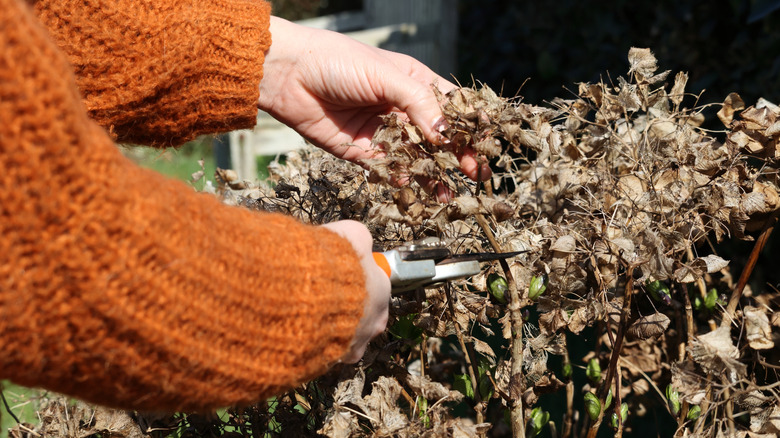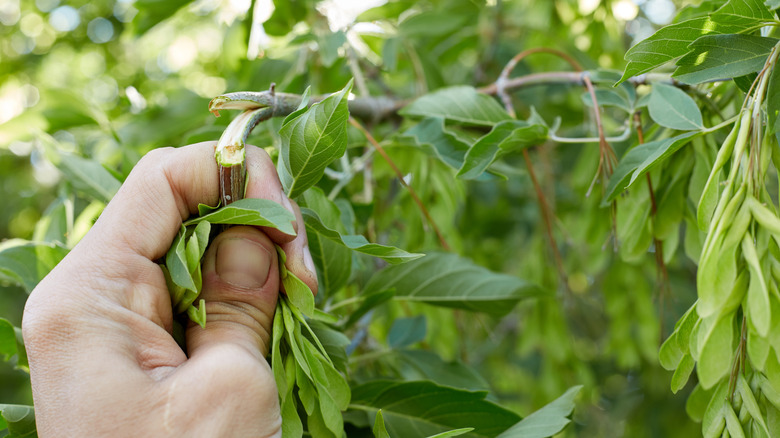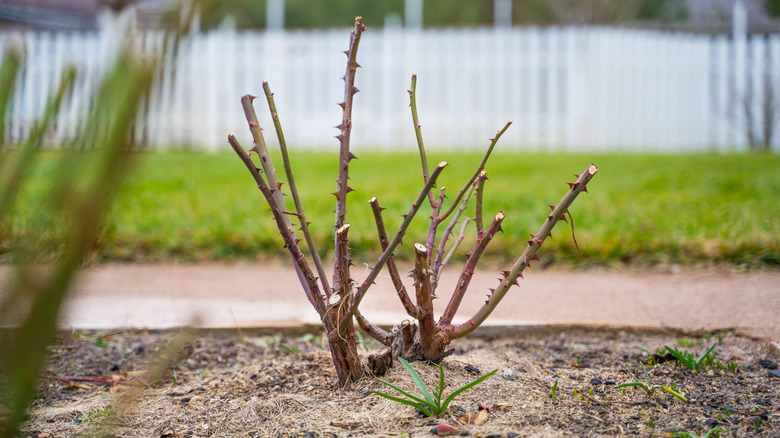How To Tell If Your Perennial Is Dead Or Just Dormant
It can be heartbreaking to see your beloved garden go from the peak of its vibrant color and vitality in spring to the deserted and colorless quiet of the winter — when most of the perennials enter dormancy. And although dormancy is a crucial phase that saves these perennials from harsh weather, not all plants are quick to get back to life with an "If winter comes, can spring be far behind?" attitude. That could lead you to assume a perennial is dead rather than resting for the winter. Therefore, prematurely deciding that a plant is all but gone (not just dormant) and shunning it to the despairs of the compost pile could be a massive mistake on your part. But how do you tell the difference between a dead or dormant zoysia grass, or any other perennial in your garden, when all you see is yellow and brown with very little signs of life? Well, apart from just being super aware of the specific plant's life cycle and dormant behavior, breaking its twigs to check flexibility and scratching its bark to measure the moisture underneath are some of the best ways to foresee if your plant will survive or not.
Different hormonal changes in a plant are responsible for phases of growth, dormancy, and flowering, and these hormones, at times, rightfully delay breaking dormancy until the conditions outside turn absolutely perfect. Imagine waking up ready to jump outside for a walk one fine morning only to realize that the snow hasn't cleared from the sidewalks! Plants might face a similar situation if they fail to detect that spring has not really arrived and begin to flower — only worse, since they can't go back to bed that quick, either.
Use the snap and scratch test to see if a plant is alive or not
The scratch test and the snap test are two highly effective but simple ways to gauge signs of life within a section of a plant. You can begin with the scratch test right at the base of the stems. This is because if you're going to witness some form of life in an otherwise lifeless-looking plant, it is most likely to be in the roots and the lower trunk. Scratch a little bit of the surface with a pair of clean pruning scissors. If you see a green, moist stem underneath, your plant is still alive. On the other hand, if all you see is brown color and dryness, you might have to say goodbye to your plant buddy.
Snapping a short twig from the stems is another good method to check for signs of life. If the twig feels brittle and breaks easily without bending, that part is definitely dead. Yet another foolproof way to get a pulse on a plant's vital signs is checking up on its root system. Some perennial shrubs have the ability to get back to life even after their entire top half appears dead. However, firmness of roots is always a sign of life that will tell if a perennial is dead or dormant, whereas brittle, mushy, and blackened roots eventually die.
Dormant vs. death depends on the plant
Being aware of the particular growth patterns of your perennial species and how it responds to changes in the weather (spring plants can bloom in the fall due to lack of rain, for example) is extremely helpful while discerning dormancy from end of life. For instance, a Joe-Pye weed is perennially late in blooming back to life, so you'll need to give it more time. Meanwhile, lilacs can break dormancy during fall, depending on the weather conditions, if there's a hot period, followed by a cold period and another warm-up. And a boxwood never loses its greens. In fact, even plants of the same genus may show a lot of variations in their patterns of breaking dormancy. This is why the better you know the idiosyncrasies of your garden members, the better you can decipher whether they are just playing possum or if something is really wrong.
Pruning is one of the biggest mistakes everyone makes while caring for dormant plants. On the other hand, adding mulch around the base is beneficial as this will conserve moisture. If you can sense life in a plant, water it deeply (but infrequently) during mornings and wait for the plant to respond. If the plant shows zero response to watering even during spring, it is probably dead. Oftentimes, the best course of action is simply waiting for a couple of weeks and letting the plant decide for you, especially if spring has not fully arrived yet. If the plant is merely going through dormancy, eventually it will develop new shoots as the soil temperature changes and conditions become more favorable. On the other hand, if it's midsummer already and the plant is still failing the scratch and snap tests, you will have to replace it.


